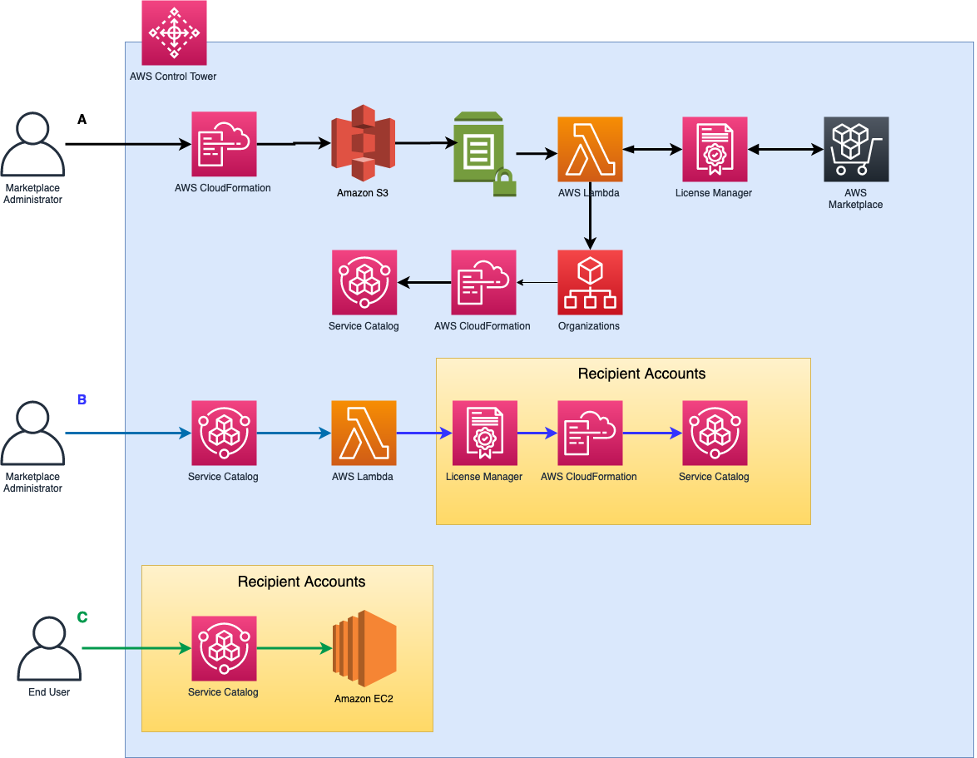AWS Cloud Operations Blog
Category: Management & Governance
Create a Jira issue using an AWS Config remediation action
AWS Config can create issue entries in the Jira Service Management platform when it determines an AWS resource is noncompliant. In this blog post, I show you how to configure an AWS Config rule to create a Jira issue after the rule detects a noncompliant AWS resource. I also share Jira Service Desk configuration changes […]
Aggregate operational tasks with AWS Systems Manager Explorer and OpsCenter
AWS Systems Manager Explorer is a customizable operations dashboard that reports information about your AWS resources. Explorer displays an aggregated view of operations data (OpsData) for your AWS accounts and across AWS Regions. Explorer provides context into how operational issues are distributed, trend over time, and vary by category. In this blog post, we explain […]
Remediate noncompliant AWS Config rules with AWS Systems Manager Automation runbooks
AWS Config is used to assess, audit, and evaluate the configuration of your AWS resources. You can use a set of AWS Config managed rules for common compliance scenarios or you can create your own rules for custom scenarios. In this blog post, I explain how AWS Systems Manager Explorer gathers the compliance status of […]
Use AWS Systems Manager Automation runbooks to resolve operational tasks
OpsCenter provides a central location where operations engineers and IT professionals can view, investigate, and resolve operational work items (OpsItems) related to AWS resources. AWS Systems Manager Automation simplifies common maintenance and deployment tasks for Amazon Elastic Compute Cloud (Amazon EC2) instances and other AWS resources. You can use this capability to build automations to […]
Automating the installation and configuration of Prometheus using Systems Manager documents
As organizations migrate workloads to the cloud, they want to ensure their teams spend more time on tasks that move the organization forward and less time managing infrastructure. Installing patches and configuring software is what AWS calls undifferentiated heavy lifting, or the hard IT work that doesn’t add value to the mission of the organization. […]
Collecting Apache Flink metrics in the Amazon CloudWatch agent
Apache Flink is a distributed stream processing engine. You can run Flink on Amazon EMR as a YARN application. You can view Flink metrics through its web UI, but what if you want to react to them? In this blog post, I’ll show you how to use the CloudWatch agent to collect Flink metrics into […]
Monitoring hybrid environments using Amazon Managed Grafana
Setting up observability for workloads is critical to tracking application performance, reliability, and health. It’s even more important when you’re dealing with workloads that are deployed in hybrid environments. A proliferation of monitoring tools can result in data silos or multiple single panes of glass. When an organization loses its consolidated view, whether it be across […]
Monitor Amazon EventBridge events in your Slack channels with AWS Chatbot
DevOps teams use chat collaboration platforms such as Slack and Amazon Chime to monitor systems and respond to events. When AWS Chatbot is integrated with Slack and Chime, users can monitor and interact with AWS resources from the chat channels, which reduces context switching between applications. DevOps users now can receive notifications from more than […]
Use AWS CloudWatch Contributor Insights to monitor CIS AWS Foundations Benchmark controls
Contributor Insights is a feature of AWS CloudWatch that can be used to analyze log data to create time series that displays contributor data. This will help you understand who or what is impacting your system and application performance by identifying top talkers, pinpointing outliers, finding the heaviest traffic patterns, and ranking the top system […]
Using AWS Control Tower, AWS Service Catalog, and AWS Marketplace to deploy AWS Marketplace license subscriptions
Enterprise customers with multiple AWS accounts want to subscribe once to an AWS Marketplace product and have all accounts in the organization deploy AWS Marketplace solutions without needing each account to subscribe first. AWS Control Tower helps customers create accounts and manage many account configurations and best practices. AWS Service Catalog helps customers deploy AWS […]









